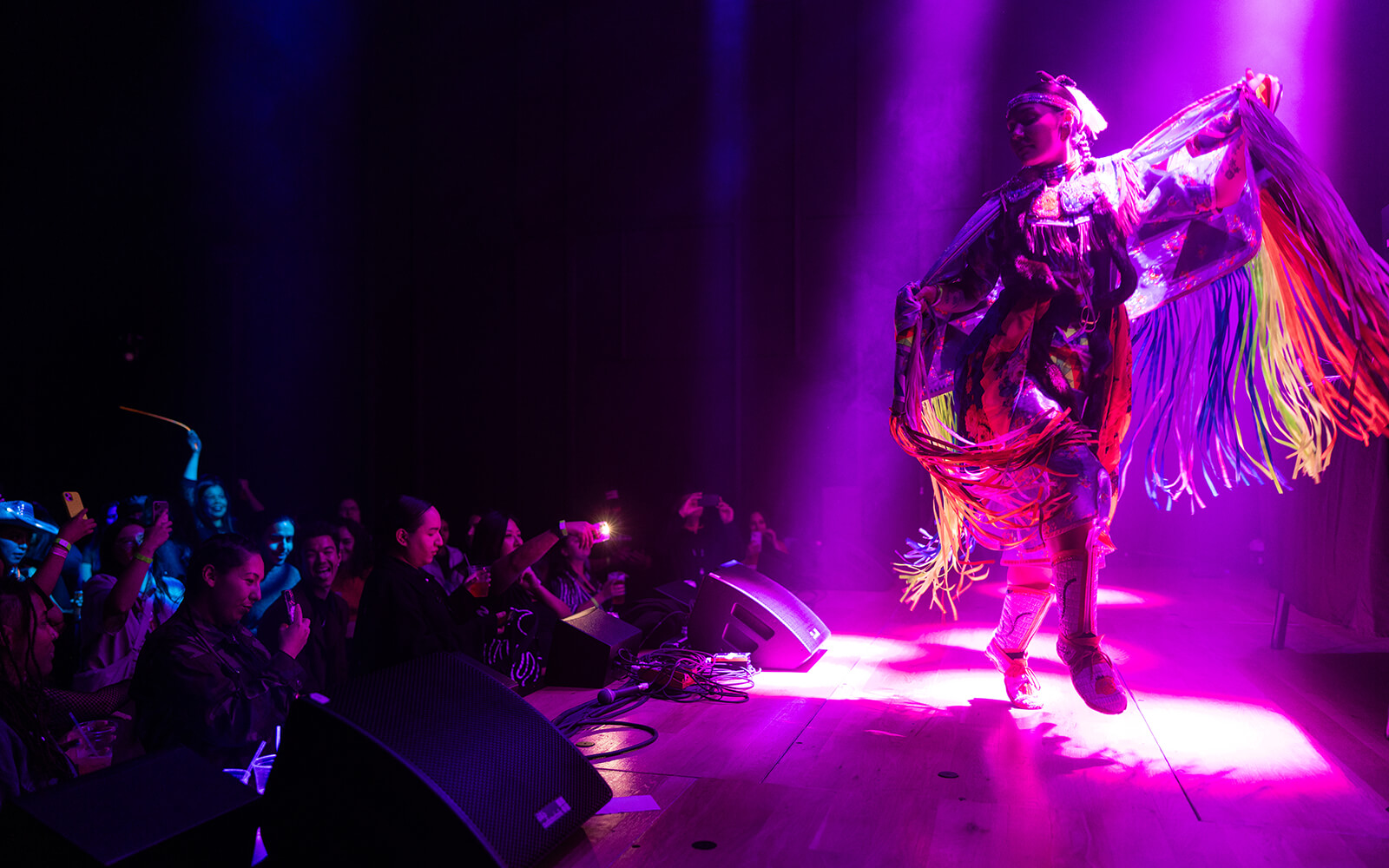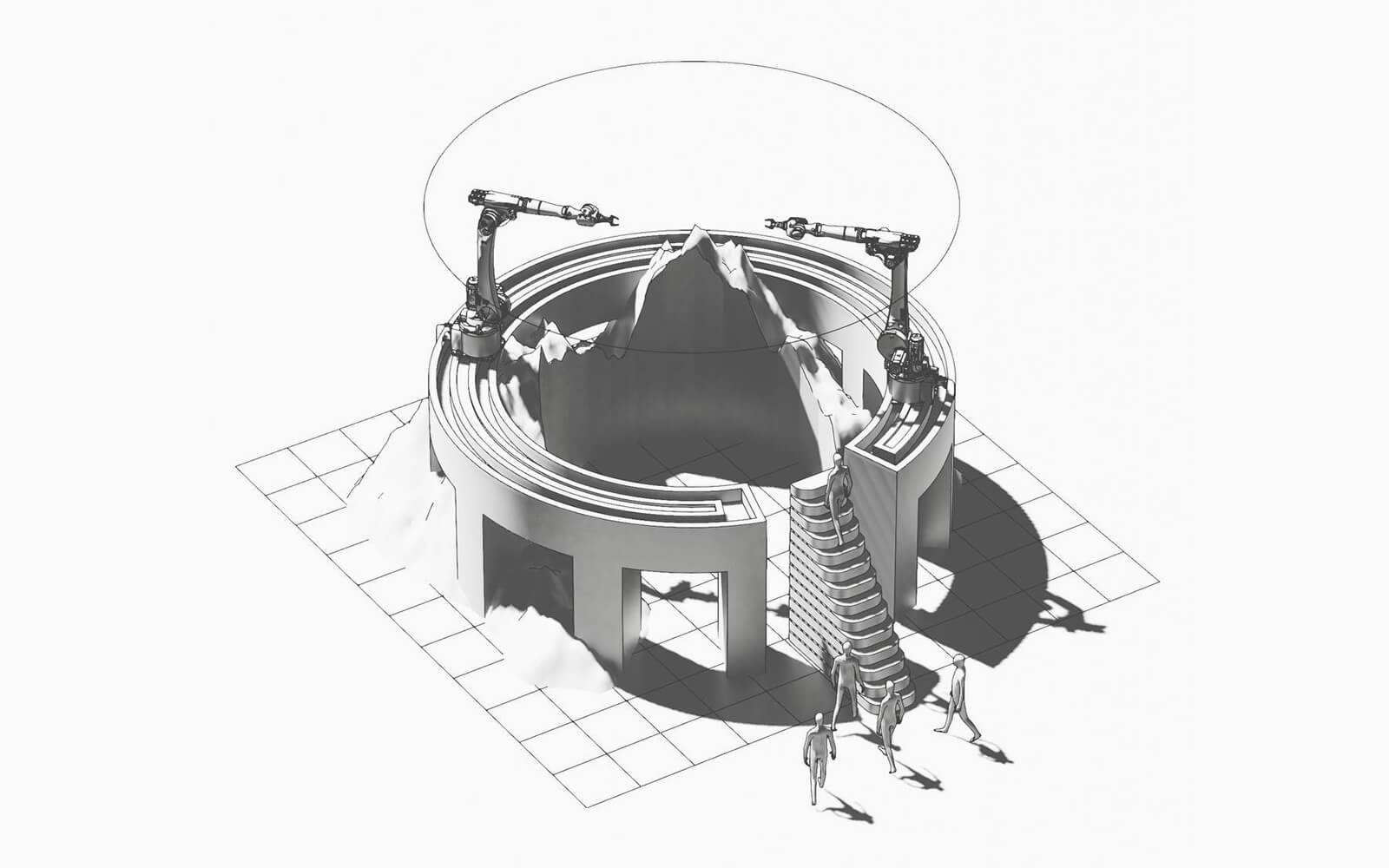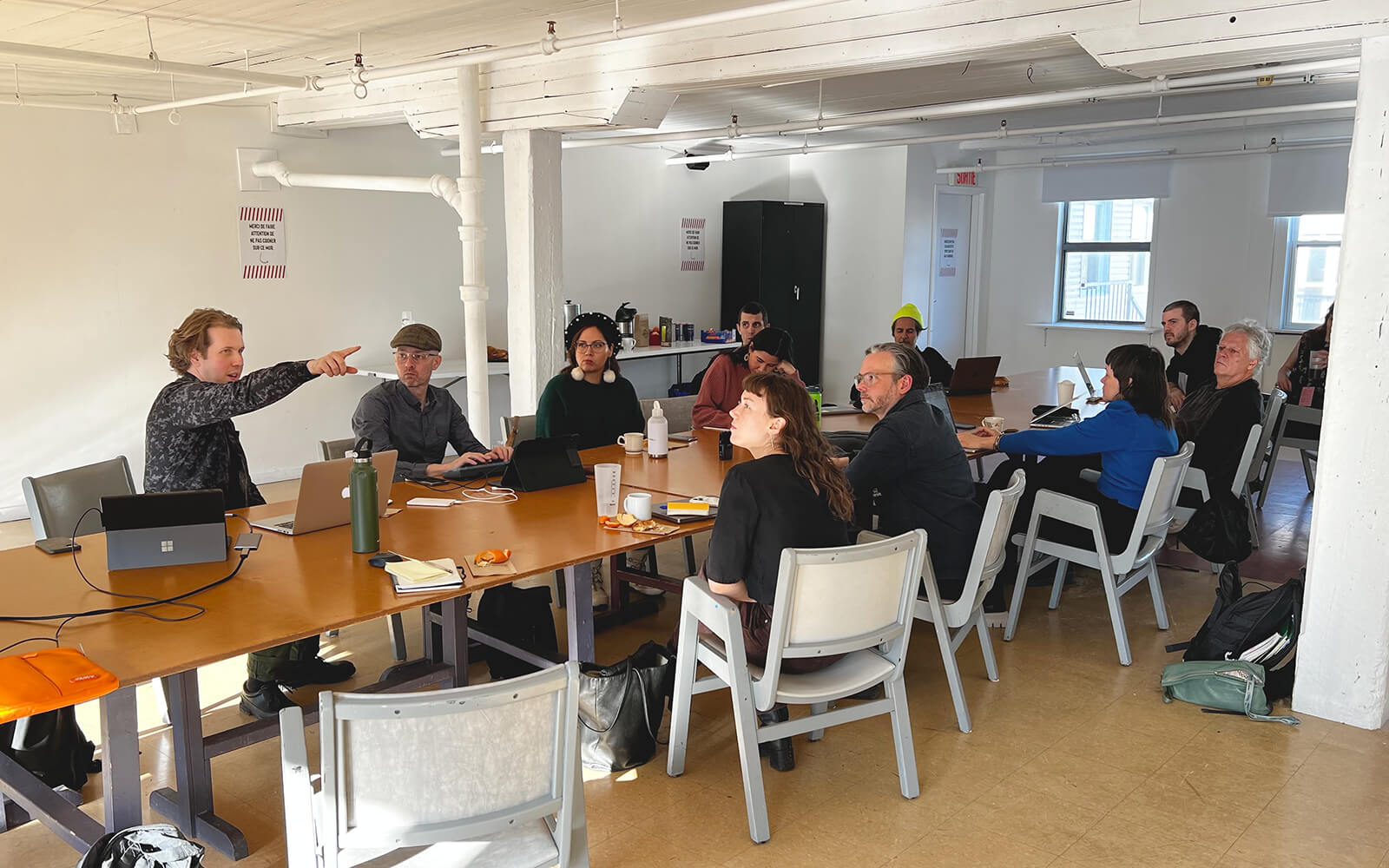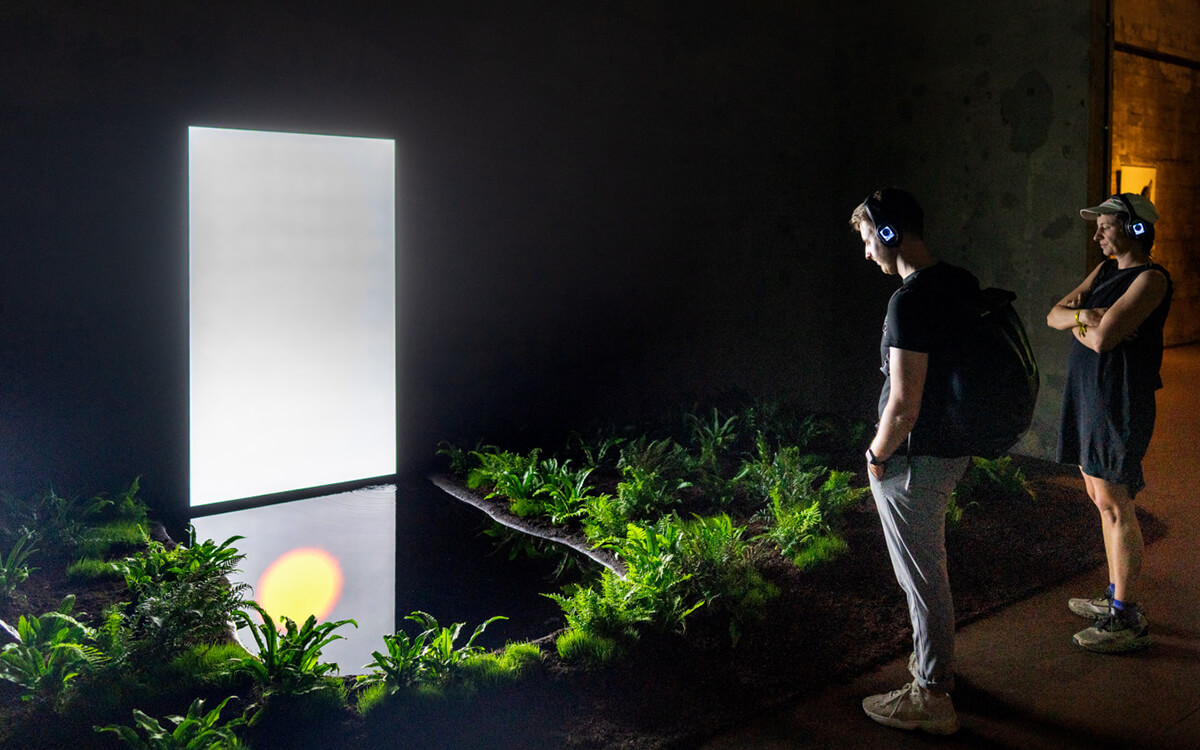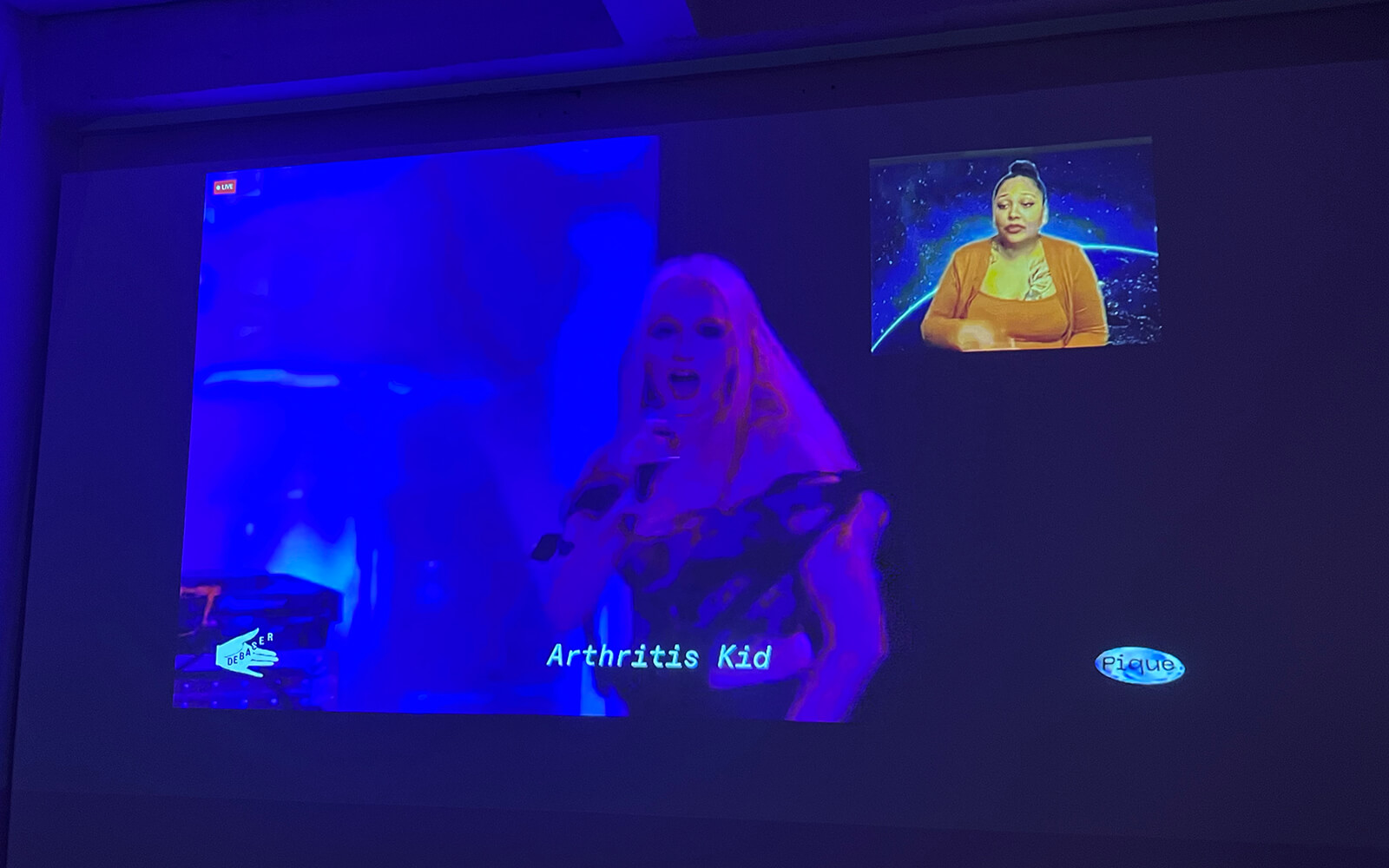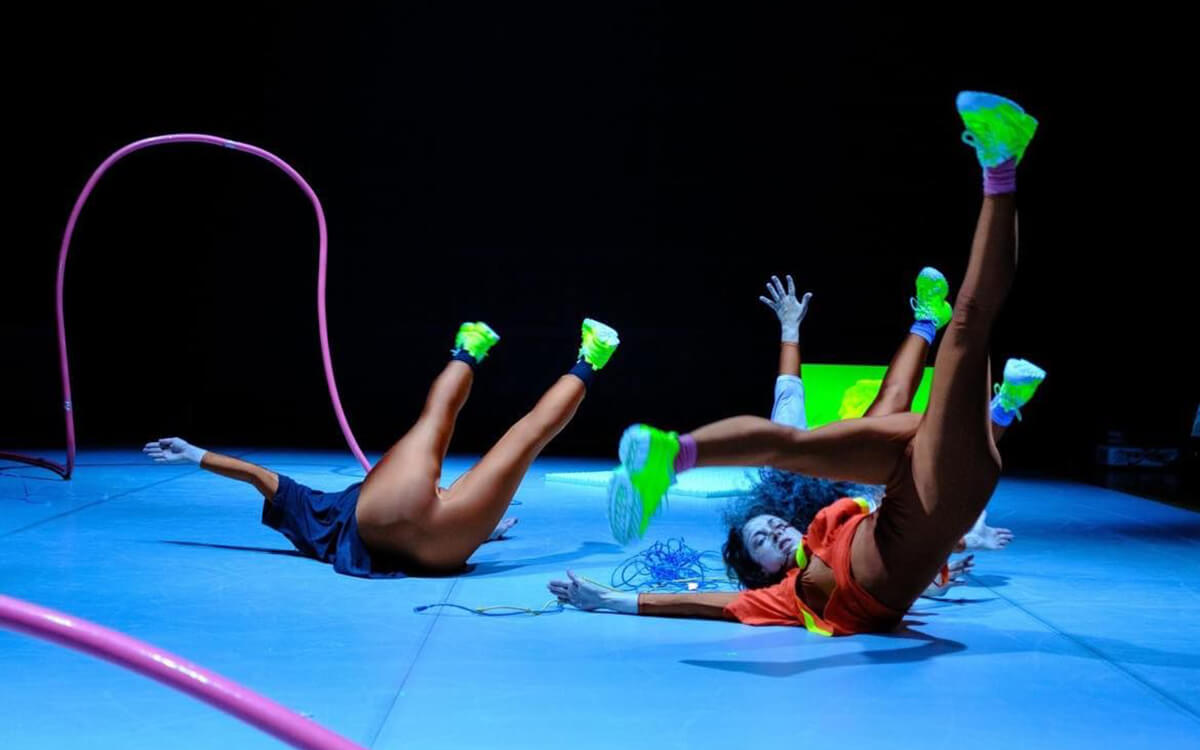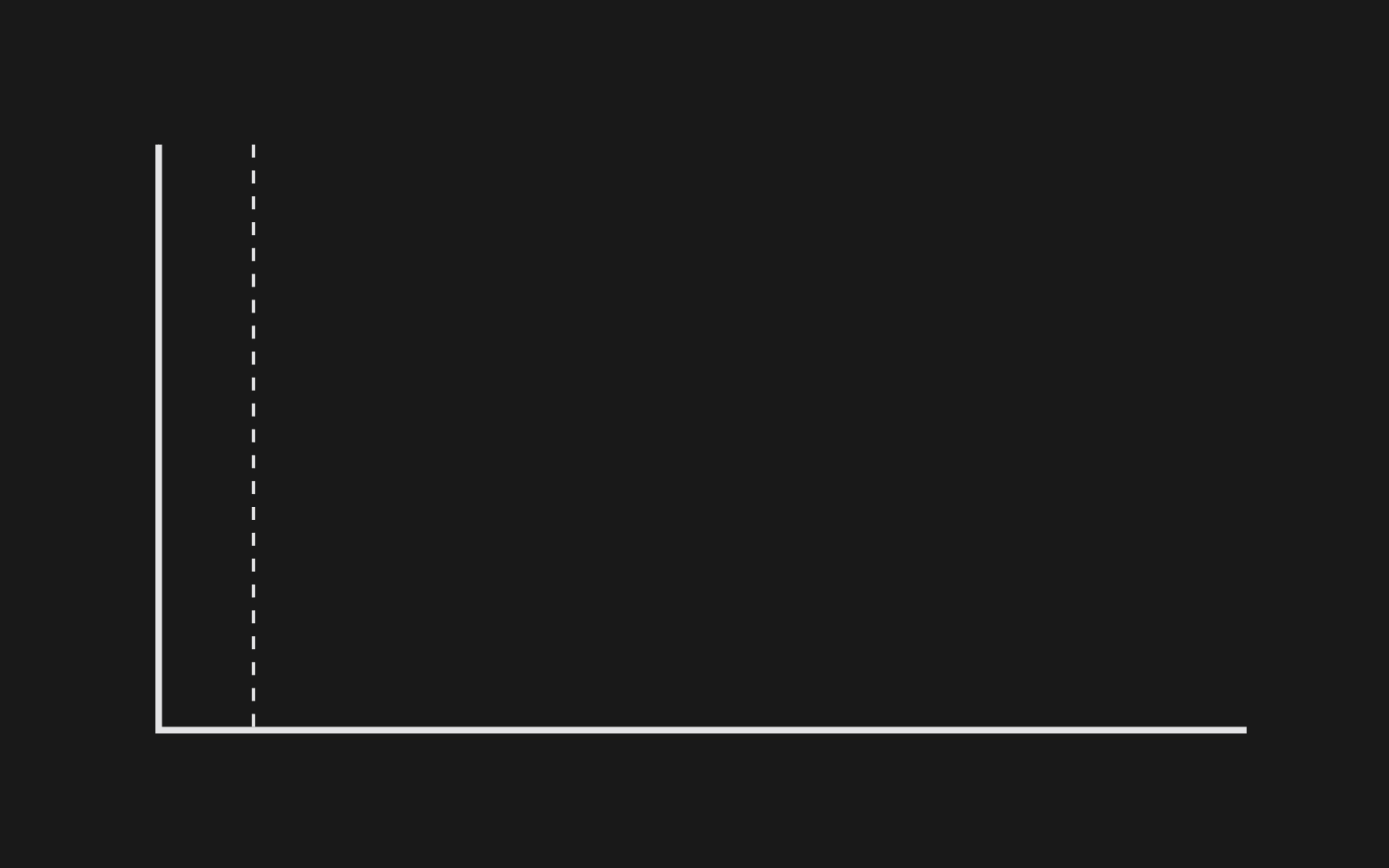Future Festivals Field Guide: Trajectories for Future Festivals
Lightning Rods and Serendipitous Discovery
Festivals are laboratories for new modes of social organization. FutureEverything founder Drew Hemment identifies six trajectories for festival makers to cultivate.
AntiVJ + Murcof (2009) Audiovisions live programme, Futuresonic Festival 2009
Photo: FutureEverything
Photo: FutureEverything
A festival is a flash of searing light, made of tenacious labour. In its heat, new compounds are born. A festival is an idea, a community, a process, a moment in time. A festival is not a ticketing system, a collection of venues, relationships with booking agents, or standard grant conditions. Festivals are tools for making the future a cultural practice with a sharp critical edge.
This article delves into futures for festivals, exploring their potential to address societal challenges, foster resilience, and create sustainable futures through culture and creativity. It’s based on the insight that, as spaces where society reinvents itself, festivals are more than just events; they are dynamic laboratories of change, places where new forms of culture and citizenship are explored and rehearsed. Festival makers, you offer more than a stage or spotlight, you are agents of change.
Festivals are also fragile and precarious, often sustained by the unpaid labour and dedication of passionate individuals. I have some experience with this, as I founded an independent festival in 1995 and spent twenty years of my life keeping it relevant, surprising, and afloat. That took its toll.
Here, I present six suggestions or trajectories for festival futures as a practice, not a set of predictions. These build on recent and current festival and futures practices and my current work on emerging technologies and cultural forms. Here, the ‘we’ stands for the many interconnected communities of festival makers of today and tomorrow.
Ling Tan, Supergestures (2018), CityVerve, the UK’s IoT city demonstrator, FutureEverything
Photo: Robin Hill
Photo: Robin Hill
Trajectory: Future festivals are ways of seeing, directions of travel, lines of inquiry, angles of critique, and rays of hope. They are a time and a place when society can ask difficult questions, and convene communities of makers and thinkers around a burning issue. As focal points throughout the year, they spotlight new artistic movements, set directions, and reframe ideas, providing a conduit for fresh thinking. They offer a space for early indicators of potential change to emerge, where we can detect and make tangible signals of possible futures. This includes the work of artists who offer radical visions for culture and society, such as those who instigate new models for data governance or challenge the way our social reality is shaped algorithmically through their work. These festivals are formed from the collaborative sense-making and intelligence of creative communities of which the festival makers are a part.
Recommendation: Consider curatorial research as forming the right questions and giving time and space for significant insights and work to emerge.
Trajectory: Future festivals involve large numbers of people in creative experiments and artistic experiences. They offer an alternative to the predictable suggestions of recommender engines, through social forms of knowledge sharing and by providing an opening to the unknown and unexpected. They go beyond the digital feed, through multi-sensory, emotional and intellectual engagement with interfaces and artifacts, and the change the experience brings about in us. The experience of a festival itself is durational and immersive, and this immersive engagement enriches the learning journey. Discovery becomes a function of intention and chance when there are too many spaces and events to mentally map. Festivals also provide a scaffold for the suspension of disbelief, allowing us to more freely imagine new possibilities. Such festivals are moments of social and experiential learning, where new compounds of creativity and community are formed, enabling participants to explore and build new worlds together.
Recommendation: Work with artists to expand the envelope through which the work can be encountered and the dimensions that can be experienced across different platforms.
Trajectory: The future festivals we make will enable us to think beyond the current technology paradigm by configuring creative and technical experiments with data, technology and situations. They are incubators for open creativity and prototyping, offering safe spaces for risk-taking, provocation, and failure. They value and foreground human intentionality, craft and invention, alongside responsible technology research and development. These festivals cultivate collaboration and creativity between the arts and sciences to explore the limits of technologies, ideas and materials. This helps artists push the boundaries of human-machine creativity to generate works that combine machine learning methods with human intuition and embodied experience. Such works can make tangible future signals and enable audiences to experience them firsthand, providing imaginative ways to understand and communicate black-boxed technologies, or the Janus-faced nature of technologies that can both help us and harm us. Such festivals can infuse experiences with intelligence and serendipity, enable artists to explore new directions in their practice and to develop significant new works, and spark radical new thinking on inclusive, fair and accountable technologies.
Recommendation: Support artists and festival makers in understanding new and emerging technology, the ways it can partner with or threaten human creators, and what significance might emerge from it.
Loop.pH, The Chronarium (2015), FutureEverything Singapore, the flagship digital culture festival for Singapore’s 50th anniversary
Photo: FutureEverything
Photo: FutureEverything
Trajectory: Future festivals are made of novel constellations of people, data and situations in which new connections and interpretations thrive. They convene communities around a challenge, or a new way of making sense of the world, and invite diverse and discordant perspectives to break free from filter bubbles. In so doing, they are a powerful tool for inclusive and relational organization and community-building. Festivals offer a place where equitable forms of cooperation and mutual support can be envisioned and enacted. They create a forum for actors to engage, where new relationships are performed, and a narrative emerges. This can then be seen as a thing, that ‘stands for’ that area of practice, that people want to be part of. Such festivals can be safe havens for those seeking to thrive in a world that does not understand them. By embracing contradictions and connecting previously unconnected ideas and people, these festivals create a liminal space where ambiguity is accepted, and new possibilities are explored, leading to radical new insights and transformative social change.
Recommendation: Build a network that contributors agree is worth creating and sustaining around an urgent issue. Don’t be an echo chamber, invite people you don’t agree with to break down polarization.
Trajectory: Future festivals are platforms for creating expansive, additive, regenerative and nurturing cultural infrastructures. They are open to a multiplicity of data rights and ownership and acknowledge and reward effortful human creative practice. Festivals and festival projects create and maintain networks and systems that enhance existing capabilities and that are fair and sustainable. Open and small models provide an alternative to current foundation models that require computer resources only the very large companies possess and globalized access to cheap labour and rare earth minerals. Building on responsible technology development, future festivals build systems and works that add imaginative dimensions to cities and that foster regenerative practices in natural ecosystems. Crucially, future cultural infrastructures need to nurture and sustain cultural workers supported by fair pay and conditions. Festivals are intertwined with the political economy, festivals are a part of broader social, economic, and political contexts. The year-round effort of festival-making is supported by demonstrating impacts after and outside the event so that value flows back. The festivals we will make are based on economies of care, invention, dedication and love.
Recommendation: Open up to new creative partnerships by understanding and realizing the impact a festival can have in other sectors. Identify challenges in other fields or movements that you could help address. How could you work to mutual benefit, what revenue streams or other resources could this unlock?
Trajectory: The future festivals we make will be nodes in larger networks and moments in longer narratives of change. Such a festival is like a tree, its roots carrying nutrients throughout an entire ecosystem and enabling other things to grow. They will be agents of transformation that help us to bridge the gap between what we know and what we do about the climate emergency and decolonization. These future festivals incorporate diverse knowledge systems and foster inclusive, fair, and environmentally sound practices. They explore new paradigms for more-than-human learning and cognitive diversity. They bring nature into the loop, to enable ecological and planetary intelligence. This holistic approach fosters transparency, critical thinking, and counter-narratives of care, imagination, and regeneration, promoting profound societal change and a deeper understanding of our interconnected world.
Recommendation: Facilitate and acknowledge many forms of agency and intelligence to bring change to your project or community. Tend to the shoots as they grow to cultivate wider transformation.
Seeds of these futures were planted in the FutureEverything Festival, which ran from 1995 to 2016. This was the UK’s festival for digital culture, acclaimed by The Guardian as one of the top ten ideas festivals in the world. In 2016, I transitioned FutureEverything to a year-round programme before handing over the reins to a new team in 2018.
That was inspired in turn by my experience of early digital culture and as a DJ and promoter of dance music parties from 1988 to 1992. I witnessed a moment when anything felt possible, after one set of rules ceased to be relevant, and before a new normal emerged.
In 2009, I decided to share practices and blueprints and developed the Festival As Lab concept and toolkit. The rhizome grew in 2010 when Festival As Lab was taken up and adopted by festivals including MUTEK (Montréal), CTM (Berlin), and Unsound (Kraków and NYC). I later built on this in Open Prototyping, and I continue to develop the approach and methods. You can read more on the development of tools and methods from 2009–11 in The FutureEverything Manual, and the Open Prototyping framework in Leonardo. This ethos still burns strong in FutureEverything, which, under a new leadership team, is appointing Nature to its Board.
I looked to the past to find ways to do the future. In the Feast of Fools—a popular festival across Europe from the 5th Century—social rules were turned upside down in a one-day social revolution. For the Russian critic Mikhail Bakhtin medieval carnivals were powerfully creative events, when alternate worlds were made real. The next day the world goes back to the way it was before. But as a critical futures practice, this inversion, this rupture, is an opening to difference, a space and moment when other futures can be experienced and made.
The Festival As Lab is a temporary space and moment, using participatory art to disrupt norms and liberate ideas. It transforms a festival into a pop-up laboratory for new ways of living, playing, and governing.
Further inspiration came from Michel Foucault’s concept of heterotopias, that is, effectively enacted utopias that open onto an outside, and maintain a space for marginality and liminality. Actor-network theory helped me to understand festivals as a struggle to reorganize resources and relations within a network that has to be constantly performed. Through Karen Barad, I came to see Festivals not as representations of reality by the human subject but as practices that produce the matter and meaning of phenomena in the world. Through the participatory design research of Sanders and Stappers, I found ways to formalize my creative practice as an artist and researcher through design frameworks and tools.
The Festival As Lab is a temporary space and moment, using participatory art to disrupt norms and liberate ideas. It combines the participatory nature of festivals with design methodologies to transform a festival into a pop-up laboratory for new ways of living, playing, and governing. Festival As Lab, and Open Prototyping, can help to build the conditions for festivals to thrive. They offer tools and methods for festival makers to innovate and experiment, connecting them to broader networks of support, and ensuring that their impact extends beyond the event itself.
The futures of festivals are not predetermined; they are shaped by our collective imagination and action. Let us imagine and create them together.
Interested in learning more? → Hear Drew Hemment at the Future Festival Summit!
A contribution by: Drew Hemment, Director of Festival Futures at the Edinburgh Futures Institute, professor at the University of Edinburgh, and researcher at The Alan Turing Institute. He founded FutureEverything in 1995 (and served as its director through 2018) and is presently the director of The New Real, a hub for AI, creativity, and futures research.
Future Festivals Field Guide
Future Festivals Field GuideExplore more of "Future Festivals Field Guide:"
→ HOLO.mg/stream/
→ HOLO.mg/future-festivals-field-guide/





